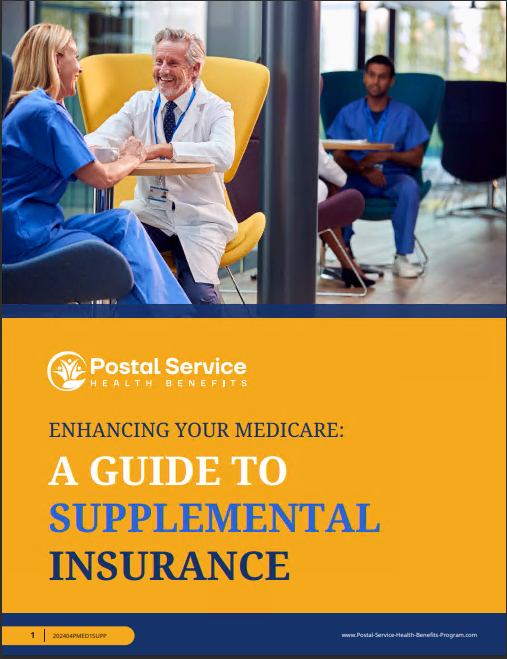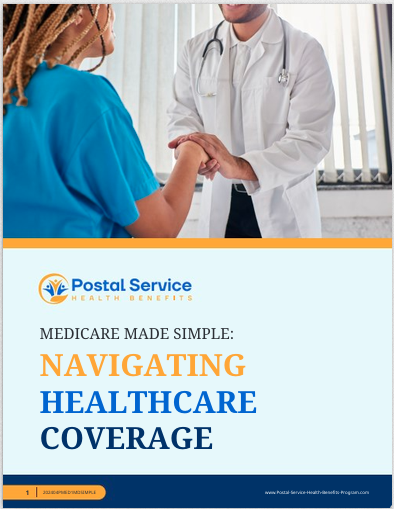Key Takeaways:
-
Medicare integration with the PSHB system simplifies healthcare for postal employees and retirees, providing enhanced benefits and reducing out-of-pocket costs.
-
Understanding how Medicare and PSHB work together ensures you make the most of your healthcare options and avoid unexpected expenses.
A Fresh Start with PSHB and Medicare
The transition to the Postal Service Health Benefits (PSHB) system marks a significant shift in how healthcare is managed for postal employees and retirees. With Medicare integration becoming an essential component, it’s crucial to understand how this collaboration enhances your healthcare coverage. Let’s dive into why Medicare integration is such a vital part of the new PSHB framework and how it impacts you directly.
What Is Medicare Integration?
Medicare integration means that Medicare-eligible postal retirees and family members coordinate their Medicare benefits with their PSHB plans. This partnership ensures that Medicare becomes the primary payer, while the PSHB plan acts as a secondary payer, covering additional costs that Medicare doesn’t fully pay for.
Why It Matters
-
Cost Savings: Medicare integration reduces your out-of-pocket expenses, including deductibles and copayments, by leveraging the combined strengths of both programs.
-
Comprehensive Coverage: You gain access to a broader range of healthcare services, ensuring better financial and medical security.
Eligibility for Medicare Integration
To benefit from Medicare integration with PSHB, you need to meet specific criteria:
-
Medicare Eligibility: You must be 65 or older or meet other Medicare eligibility requirements due to disability.
-
PSHB Enrollment: Being enrolled in a PSHB plan is mandatory to access integrated benefits.
-
Medicare Part B Enrollment: If you’re a Medicare-eligible postal retiree or family member, enrolling in Medicare Part B is generally required unless you fall under certain exemptions.
Important Dates
The PSHB transition began on January 1, 2025, and marks a permanent shift. Ensure your Medicare enrollment aligns with these timelines to avoid lapses in coverage or penalties.
How Medicare and PSHB Work Together
Once integrated, Medicare covers the bulk of your healthcare costs, including hospital stays (Part A) and outpatient care (Part B). Your PSHB plan then picks up where Medicare leaves off, often covering:
-
Deductibles and coinsurance
-
Additional services not fully covered by Medicare
-
Prescription drug costs under a Medicare Part D employer group waiver plan (EGWP)
Key Benefits of Integration
-
Reduced Out-of-Pocket Maximums: Many PSHB plans lower deductibles and copayments for members with Medicare.
-
Streamlined Coordination: Claims are processed seamlessly between Medicare and PSHB providers, reducing administrative hassles.
-
Prescription Savings: Integration includes Medicare Part D coverage, significantly lowering drug expenses.
Costs to Consider
While integration offers financial advantages, there are still costs you’ll need to budget for:
-
Medicare Part B Premiums: The standard premium in 2025 is $185 per month, with higher-income beneficiaries paying more due to the Income-Related Monthly Adjustment Amount (IRMAA).
-
PSHB Premiums: While government contributions cover about 70% of the cost, you’re responsible for the remainder based on your chosen plan.
Planning ahead ensures you’re prepared to manage these costs without surprises.
Making the Most of Medicare Integration
To fully leverage the benefits of Medicare integration with PSHB, you need to take proactive steps:
1. Review Your Plan Annually
Open Season, held each fall, is your opportunity to evaluate your PSHB plan and make changes. Compare how different plans integrate with Medicare and consider costs, coverage, and provider networks.
2. Understand Special Enrollment Periods (SEPs)
Life changes, such as moving or losing other coverage, may trigger SEPs. These allow you to adjust your Medicare or PSHB enrollment outside the standard periods.
3. Maximize Preventive Care
Take advantage of preventive services covered by Medicare and PSHB. These often include screenings, vaccinations, and annual wellness visits at no additional cost.
Common Questions About Integration
Do I have to enroll in Medicare Part B?
Yes, most Medicare-eligible retirees must enroll in Part B to maintain PSHB coverage. Exceptions apply if you retired before January 1, 2025, or meet other criteria.
What happens if I don’t enroll in Part B?
Failing to enroll can lead to penalties and higher out-of-pocket costs. Additionally, your PSHB plan may limit coverage if Medicare integration requirements aren’t met.
How does integration affect my family?
Medicare integration benefits apply to Medicare-eligible family members under your PSHB plan. Non-Medicare-eligible members continue with standard PSHB coverage.
Benefits for Postal Employees and Retirees
The integration of Medicare with PSHB provides a tailored solution for postal workers, focusing on their unique needs. Whether you’re currently working or retired, this system ensures:
-
Better Financial Security: Lower healthcare costs and predictable expenses.
-
Improved Access to Care: A wider network of providers and reduced barriers to services.
-
Simplified Management: Coordinated benefits eliminate redundancies and paperwork.
Planning for the Future
Healthcare needs change over time, and Medicare integration with PSHB is designed to adapt with you. Here are steps to ensure a smooth experience:
-
Stay Informed: Monitor updates from the Office of Personnel Management (OPM) and Medicare to understand how changes may impact your benefits.
-
Seek Advice: Use resources like PSHB plan brochures and Medicare support lines to clarify any doubts.
-
Budget Wisely: Factor in premiums, deductibles, and other costs when planning for retirement.
Why This Matters to You
Medicare integration with PSHB isn’t just about cost savings. It’s about creating a healthcare system that prioritizes your well-being and provides peace of mind. By taking the time to understand how these programs work together, you can enjoy comprehensive coverage and fewer financial worries.
A Healthier, Smarter Future Awaits
The integration of Medicare with the Postal Service Health Benefits system is a game-changer for postal employees and retirees. With enhanced benefits, reduced costs, and seamless coordination, it’s a partnership that’s built to meet your needs today and tomorrow. Make the most of this opportunity and take control of your healthcare journey.







